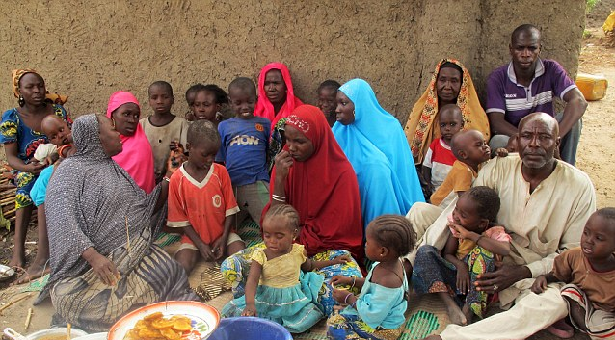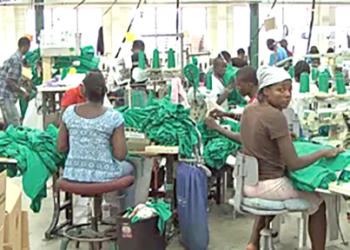In the vast and diverse landscape of Northern Nigeria, where the sun’s relentless rays cast long shadows on the arid land, a persistent issue looms large over the region’s horizon: poverty. For decades, Northern Nigerian states have grappled with this formidable foe, striving to alleviate the suffering of millions trapped in its relentless grip. However, despite countless efforts and well-intentioned policies, poverty has remained a formidable adversary, casting doubt on the effectiveness of conventional approaches.
As Daniel Kahneman has pointed out to us, while the human brain is a remarkable organ, it also has its limitations. One of these is that it is built to conserve energy. What that in turn means is that we readily engage in fast, linear thinking when the challenges we face are complex. Forcing yourself to think differently is the key to untangling complex situations.
Let me take you on a journey through the heart of Northern Nigeria, where I encountered a novel approach to poverty alleviation—one that challenged the conventional wisdom and dared to tread the path of complex thinking.
Our journey begins in Kano, a bustling metropolis known for its rich history and vibrant culture. I found myself sitting across from Amina, a passionate and determined social entrepreneur. She recounted her experiences in launching a groundbreaking initiative, one that sought to address the multifaceted challenges of poverty.
Amina’s journey had started in the dusty streets of Kano, where she had witnessed firsthand the struggles of the urban poor. She realized that conventional poverty alleviation strategies were often too linear, focusing solely on income generation without considering the broader social and environmental factors that perpetuated poverty.
In her quest for a more holistic approach, Amina partnered with local communities and experts to create a program that combined economic empowerment with education, healthcare, and environmental sustainability. The program aimed not only to increase income but also to break the cycle of poverty by addressing its root causes.
Amina’s story highlighted a critical insight: poverty alleviation in Northern Nigeria required thinking beyond the narrow confines of traditional solutions. The challenges were indeed complex, and addressing them necessitated a multidimensional approach.
Continuing our journey, we ventured deeper into Northern Nigeria, reaching the vast plains of Sokoto. Here, we met Ibrahim, a community leader who had taken a different path to address poverty. He shared his remarkable story of fostering social cohesion as a means to alleviate the hardships faced by his people.
Ibrahim’s village had been torn apart by internal conflicts and rivalries, exacerbating poverty and stifling development. Recognizing the need for unity, he embarked on a mission to bridge divides and build trust among community members.
Through dialogue and mediation, Ibrahim initiated reconciliation processes that allowed the community to come together and pool resources for collective development. They invested in education and healthcare, addressing the basic needs of the vulnerable, and established a microfinance system that provided interest-free loans to budding entrepreneurs.
Ibrahim’s approach exemplified the power of social capital and community-driven initiatives in poverty alleviation. By focusing on fostering relationships and trust within his community, he had unlocked a pathway to sustainable development.
Our journey tok us further north, where we arrived in Maiduguri, a city that had endured the devastating impact of insurgency. Here, we met Zainab, a resilient young woman who had managed to defy the odds and create opportunities for herself and others in the midst of adversity.
Zainab’s story was one of unwavering determination. Despite the challenges posed by conflict, she had founded a vocational training center that offered skills development and job placement services to displaced youth. Her center provided not only practical skills but also a sense of purpose and hope to those who had lost everything.
What struck me most about Zainab’s story was her ability to adapt and innovate in the face of extreme complexity. She had recognized that traditional approaches to poverty alleviation were ill-suited to the unique circumstances of Maiduguri. Instead, she had harnessed the potential of young people and empowered them to be agents of change in their own lives.
As ur journey through Northern Nigeria unfolded, I couldn’t help but reflect on the common thread that connected these diverse stories: the recognition of complexity and the willingness to think beyond the usual confines of poverty alleviation strategies.
Conventional wisdom often leads us to believe that there is a one-size-fits-all solution to poverty. Yet, the reality on the ground is far more nuanced. Poverty in Northern Nigeria, like poverty anywhere else, is a complex web of interconnected factors, from economic disparities to social divisions and environmental challenges.
The human brain’s natural tendency to conserve energy by engaging in fast, linear thinking may be hindering our ability to address this complexity effectively. To untangle the intricate issues surrounding poverty, we must force ourselves to think differently, as Kahneman suggests.
In conclusion, our journey through Northern Nigeria as shown us that the fight against poverty is not a linear path but a multifaceted expedition into the heart of complexity. Amina, Ibrahim, and Zainab, along with countless others we encountered along the way, have demonstrated the power of innovative and holistic approaches to poverty alleviation.
As we navigate the challenges of poverty in Northern Nigeria and beyond, let us remember that the human brain, while remarkable, can be our own limiting factor. To truly make a difference, we must break free from the constraints of conventional thinking and embrace the complexity of the issues we face.
It is only by daring to think differently, by considering the intricate web of factors that contribute to poverty, and by fostering collaboration and innovation at the community level that we can hope to bring about meaningful change in the lives of those who have long suffered its burdens. The journey may be challenging, but the destination—a brighter, more equitable future for Northern Nigeria—is worth every effort.




